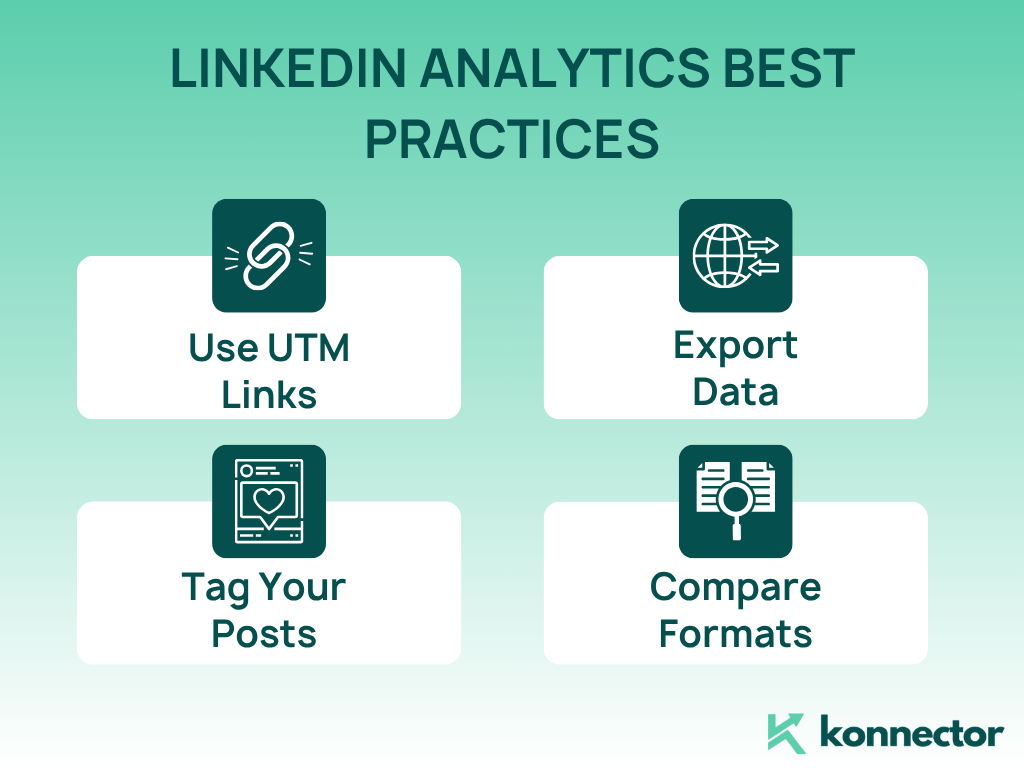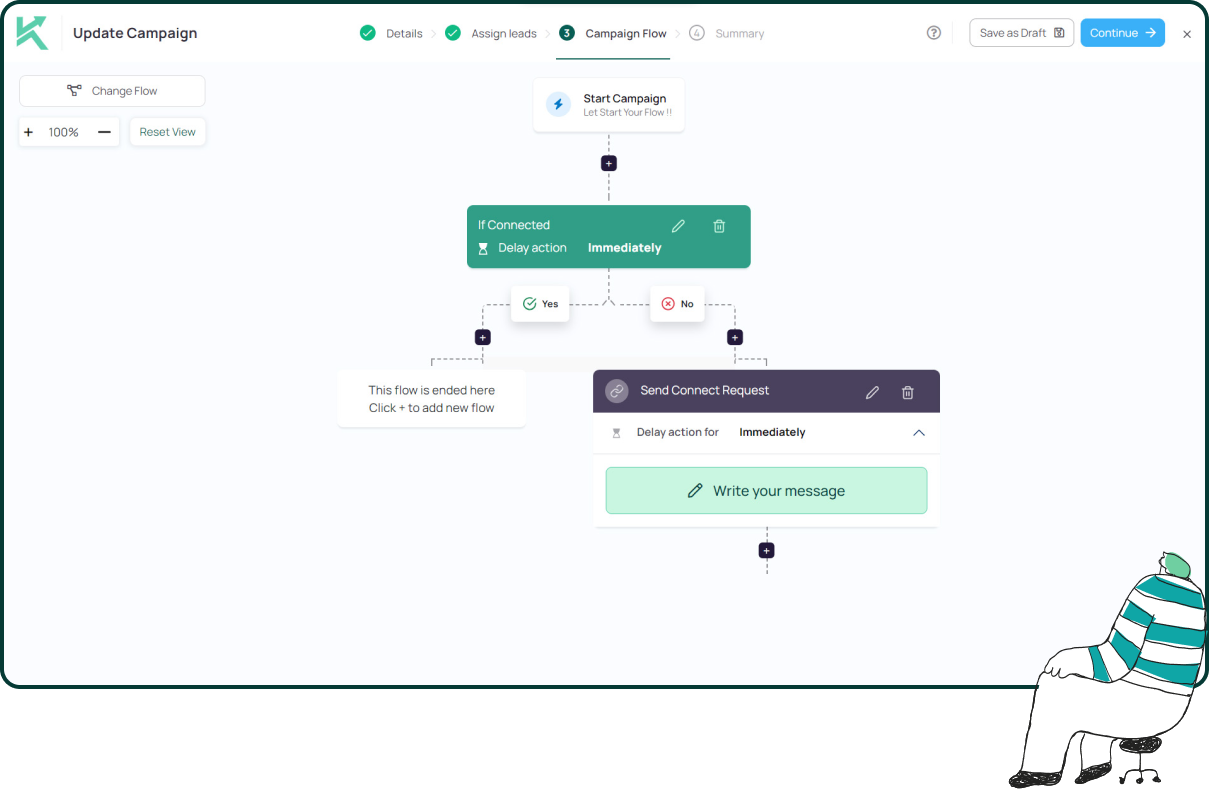LinkedIn Analytics 2025: Why It Matters
In 2025, LinkedIn is more than just a networking platform—it’s a real-time data intelligence engine for professionals, marketers, and B2B decision-makers. With new tools and deeper analytics, it’s possible to go far beyond basic likes and comments to understand what’s truly driving performance.
LinkedIn analytics now offer visibility into audience behavior, engagement patterns, and campaign results—giving you the power to fine-tune your messaging, content strategy, and sales outreach in ways that directly impact business outcomes.
Whether you’re looking to generate qualified leads, grow your brand, recruit top talent, or position yourself as a thought leader, mastering LinkedIn analytics is no longer optional—it’s a competitive edge.
The businesses that know how to interpret and act on LinkedIn data will be the ones leading the market in visibility, engagement, and growth.
Why LinkedIn Analytics Matter More Than Ever
LinkedIn is now central to B2B brand-building, lead generation, and recruitment. With more users engaging via thought leadership and content marketing, it’s essential to measure performance and adapt. LinkedIn analytics go beyond vanity metrics like likes and comments—they tell you what’s working, what’s not, and how to improve.
Data without action is just noise. Analytics turn visibility into strategy.
Using Analytics to Refine Content Strategy
Tracking data is just the first step—the real value lies in applying it. Your LinkedIn analytics should become your content compass, guiding what you post, how often, and in what format.
Look for content patterns: Are certain types of posts—like industry insights or personal stories—consistently outperforming others? These trends show what resonates with your audience and should be repeated or expanded.
Compare formats: Do your carousels drive more engagement than text-only posts? Does video content result in more profile views or DMs? LinkedIn analytics lets you compare by post type, so you can double down on formats that bring results.
Identify best-performing topics: Some themes will consistently earn more clicks and shares—whether it’s leadership insights, hiring tips, or data-backed case studies. Keep a running list of these top-performing topics and rotate them strategically.
Assess optimal posting times: LinkedIn now suggests timing based on your audience’s activity. Use that to schedule posts when they’re most likely to be seen—not just when it’s convenient for you.
Test, learn, adapt: Try slight variations—different headlines, CTAs, or tone—and track how each performs. Even a 10% increase in engagement can lead to exponential visibility over time.

Content without strategy is noise. Analytics help you publish with purpose.
Want a downloadable worksheet to audit your LinkedIn performance and map out next steps? Let me know—I can create one tailored for weekly and monthly content analysis.
Use this feedback loop to:
– Adjust your posting schedule – Focus on high-performing content types – Double down on topics that resonate – Retire low-engagement formats or themes
Analytics aren’t there to judge you—they’re there to guide you.
How Often Should You Review LinkedIn Analytics?
Weekly
Review post performance, engagement rate, and profile views to keep a pulse on what’s working in real time. This helps you identify high-performing content quickly, tweak underperforming posts, and maintain momentum. Weekly reviews also let you respond to shifts in audience interest or capitalize on trending topics as they happen.
Monthly
Track growth trends, follower insights, and campaign impact at a broader level. Analyze which content themes contributed most to visibility or lead generation. Dive deeper into audience demographics—job titles, industries, and locations—to see if you’re attracting your ideal viewers. Monthly reviews help inform future editorial calendars and campaign pivots.
Quarterly
Reassess your content themes and align metrics with business KPIs. Step back to evaluate whether your LinkedIn strategy is moving the needle on broader goals—brand awareness, lead quality, or thought leadership. Identify emerging trends, retire content formats that aren’t performing, and set updated benchmarks for the next quarter.
Consistency builds momentum, but reflection ensures you’re heading in the right direction
LinkedIn Analytics Best Practices
Use UTM Links
UTM parameters allow you to track exactly how much traffic your LinkedIn posts are driving to your website, landing pages, or lead magnets. Add UTM tags to every external link you share—so instead of guessing where your clicks come from, you get exact source and campaign data in Google Analytics or HubSpot. This is especially important for demand-gen campaigns and gated content.
Export Data
Don’t limit your analysis to LinkedIn’s dashboard. Export your analytics data as a CSV file so you can manipulate it further. Build your own tracker in Excel or Google Sheets to compare week-on-week or campaign-by-campaign results. This helps you identify trends, track KPIs more effectively, and visualize long-term growth.
Tag Your Posts
Internal tagging systems—even if manual—can help you group posts by theme (e.g., thought leadership, product updates, team stories). Over time, you’ll see which content buckets perform best and which topics to prioritize. It’s a simple but powerful way to build a data-backed content strategy.
Compare Formats
Don’t assume all content performs the same way. Track performance across formats like long-form text, single-image posts, carousels, and video. Each has its own rhythm and engagement behavior. For example, carousels might get more saves, while text posts spark comments. Knowing what format works best for your goals ensures you’re not just posting, but performing.

Metrics give you direction—best practices give you the tools to act on them.
Want me to turn this into a downloadable audit checklist for your team? Let me know!
Final Thoughts
LinkedIn Analytics in 2025 is no longer just a tool for social media managers—it’s a strategic asset for marketers, founders, and sales teams. When used well, it helps you speak to the right audience, at the right time, with the right message.
Whether you’re aiming for reach, reputation, or revenue—your metrics hold the roadmap.
Listen to your data—it already knows what your audience wants.

11x Your LinkedIn Outreach With
Automation and Gen AI
Harness the power of LinkedIn Automation and Gen AI to amplify your reach like never before. Engage thousands of leads weekly with AI-driven comments and targeted campaigns—all from one lead-gen powerhouse platform.







